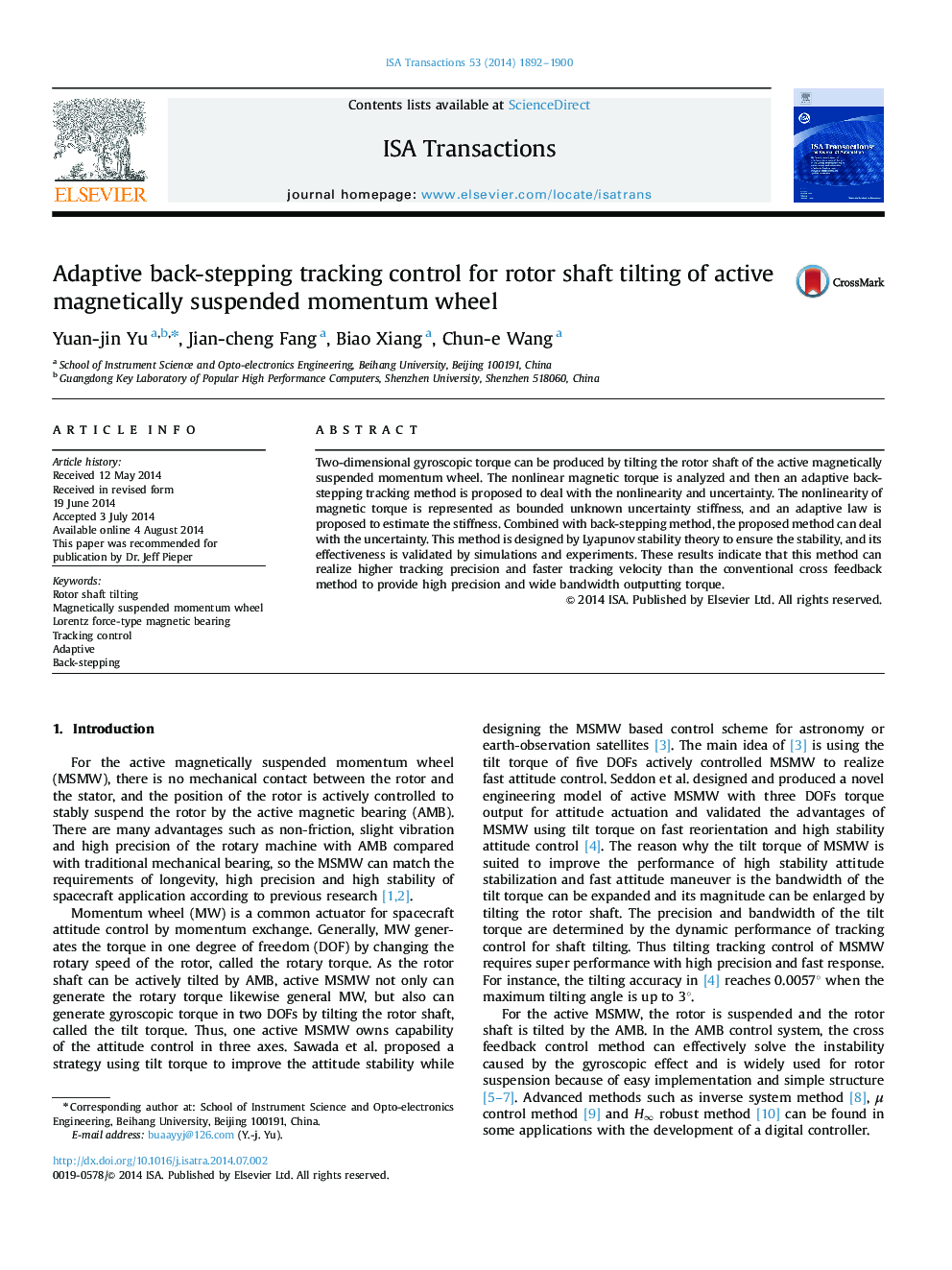| Article ID | Journal | Published Year | Pages | File Type |
|---|---|---|---|---|
| 5004632 | ISA Transactions | 2014 | 9 Pages |
•A magnetically suspended momentum wheel generates two-dimensional torque by tilting rotor shaft.•The nonlinearity of magnetic torque is expressed by analyzing the flux density distribution.•The bounded unknown stiffness describes the nonlinearity of Lorentz-type magnetic bearing.•An adaptive back-stepping method is designed to improve the tilting tracking performance.•Simulations and experiments based on the engineering model validate the proposed method.
Two-dimensional gyroscopic torque can be produced by tilting the rotor shaft of the active magnetically suspended momentum wheel. The nonlinear magnetic torque is analyzed and then an adaptive back-stepping tracking method is proposed to deal with the nonlinearity and uncertainty. The nonlinearity of magnetic torque is represented as bounded unknown uncertainty stiffness, and an adaptive law is proposed to estimate the stiffness. Combined with back-stepping method, the proposed method can deal with the uncertainty. This method is designed by Lyapunov stability theory to ensure the stability, and its effectiveness is validated by simulations and experiments. These results indicate that this method can realize higher tracking precision and faster tracking velocity than the conventional cross feedback method to provide high precision and wide bandwidth outputting torque.
